#snellen eye chart
Explore tagged Tumblr posts
Text
Find Snellen Eye Chart Manufacturers In India

Snellen Eye Chart Manufacturers in India: Eye charts are one of the numerous instruments the doctor uses during an eye exam, but they help assess one’s eyesight. During an eye exam, eye charts assess visual acuity by comparing how well one can see to other people. The eye doctor asks the patient to read the minor line of writing that one can make out from 20 feet away while looking at the eye chart.
Read more:
#Eye Chart Manufacturers in India#snellen eye chart#Snellen Eye Chart Manufacturer#vision testing chart#Vision Testing Chart Supplier#distance vision chart manufacturer
1 note
·
View note
Text
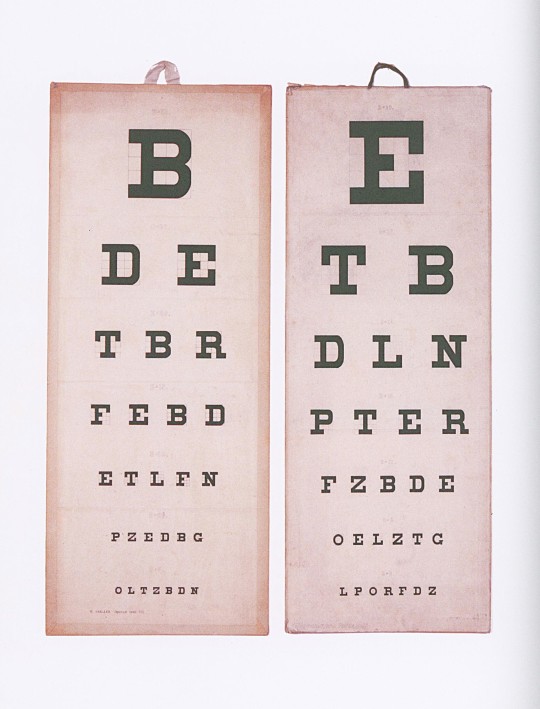
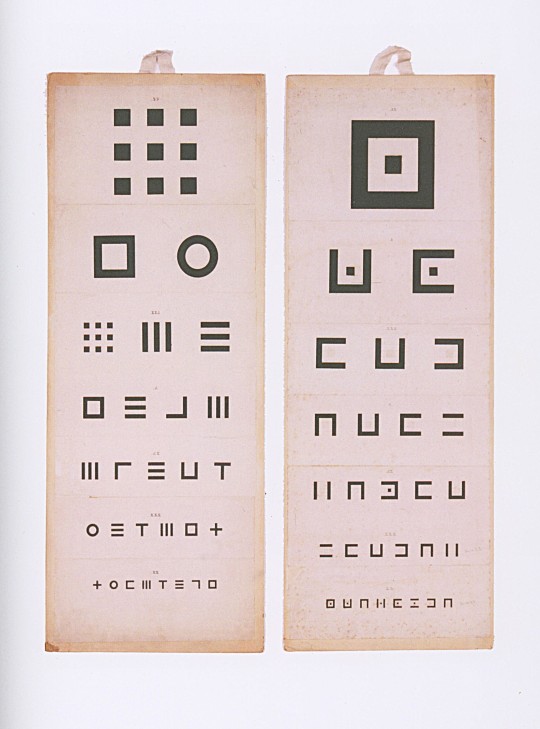
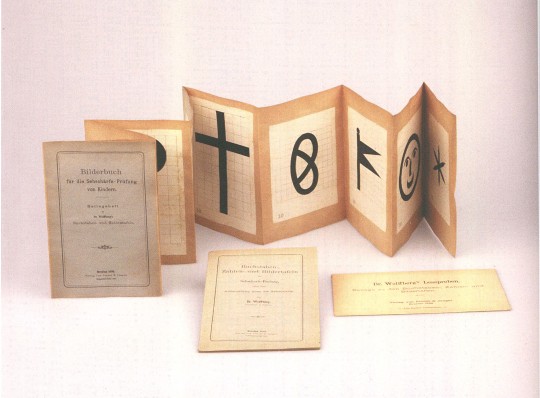
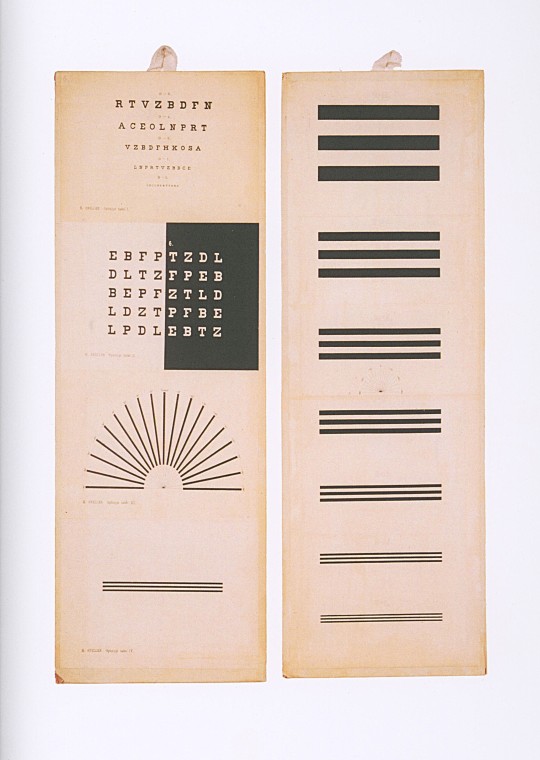
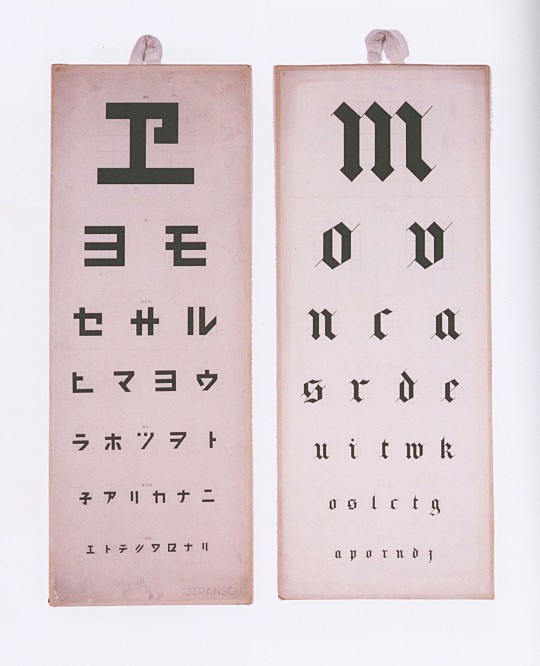
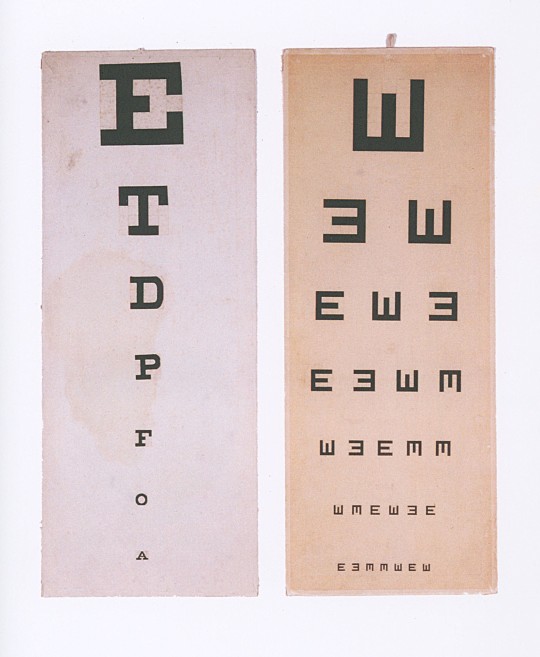
Typography Tuesday
Eye charts using letters of the alphabet, designed to test visual acuity and the efficacy of corrective lenses, were introduced in the 1830s. To increase optical distance in the testing room, some charts were designed with reverse letters and viewed through a facing mirror. In the 1860s the Utrecht optometrist Herman Snellen designed the first scientifically reliable charts for testing vision distance using carefully size-adjusted letters based on the typeface Egyptian Paragon. Sans-serif letters, having less visual distraction, were introduced later (Gill Sans Bold has been especially popular with British opticians). In the 1870s Snellen introduced charts with calibrated lines and abstract figures for young or illiterate patients. Eye chart designs all over the world are still based on Snellen's pioneering "optotypes." The economy and clarity demanded by its function gave the eye test charts a typographic formal and modernist elegance. View the captions for descriptions of each chart.
These images are reproduced in ABZ, edited by Julian Rothenstein and Mel Gooding, and published in San Francisco by Chronicle Books in 2003 (an earlier edition was published by Shambhala in 1993 as Alphabets & Other Signs).
View another post from ABZ.
View our other Typography Tuesday posts.
#Typography Tuesday#typetuesday#eye charts#eye test charts#Herman Snellen#Snellen eye charts#optotypes#Egyptian Paragon#ABZ#Julian Rothenstein#Mel Gooding#Chronicle Books#19th century type
75 notes
·
View notes
Text
fun fact im legally blind in my right eye
found out a few days ago 😌
#20 over fucking 200 vision right here lads#i currently take anatomy so we were doing a bunch of eye shit cause of the leason we're on#and of course we take ye old#snellen chart test#and i cant even see that big ass E on the very top with my left eye shut#so that's fun#just needed to let the world know#s0up1talks
16 notes
·
View notes
Text
DO YOU GUYS THINK HIS COCK ALSO HAS
M
I
D
A
S
TATTOOED ON IT LIKE???? 😭😭😭😭
#he would#glitching into his pants to check brb#BRO I WAS TRYING TO FALL ASLEEP ONLY FOR THIS TO POP UP IN MY HEAD#fukcing ugly crying at this#0/10 dying on the spot from laughing#nsft text#fortnite#midas#fortnite midas#midas fortnite#KILL ME#magpie talks will they shut up?#truly *the* headcanons of all time#this was in my drafts for a week it’s time to unleash it now#bro has the fucking snellen chart eye exam reading thing down there#i uhhh i see an M? or an N?? uhhhh???#i need new glasses
6 notes
·
View notes
Text
TIL that my right eye had gone haywire and shit
#story time! because im annoying#so today is my first day of clinical posting this semester and im posted to eye clinic#so we did our assessment (which the marks not as high as i expected) which are performing visual acuity test and instil eye drops#and when my friend did the visual acuity test on me my right eye vision is shit even when im wearing my glasses#it was 6/18 (which in the snellen chart i only managed to read until the 3rd row)#my left eye is okay and i thought i was tripping tbh#my ci thought my glasses' power increases as hell so she sent me to the low vision specialist part of the clinic#the ophthalmologist mention a medical condition idk the name and did the test like you would when you want to buy prescription glasses#the one where you wear a weird glasses and they keep on changing the lenses and ask you if its clearer or what#ANYWAY#turns out that when i was younger apparently the shop i made my glasses did the wrong prescription glasses#like my left eye was right but my right eye was wrong and it made my right eye turn to shit#so my power for my left eye is 300 while my right eye is 600+#but they cant give me the 600 on my right eye because then it will autocorrect#like if i occlude my left eye i can see the it clearer but as a pair of glasses it will be hard to read as the words will merge and all#so what the glasses shop i got my latest glasses did is they balanced the power on each side so that i can see better#thats why when i did the visual acuity test my right eye is shit because my glasses is made that way to balance it#its a really good news though because i thought that i need to buy new glasses#he did mention that my 'silau' increases tho but that's fine#the more you know 👀#personal.txt
3 notes
·
View notes
Text
Eye Test Charts - Evolution of Vision Tests Since 1860s
Discover how eye test charts have evolved since the 1860s, from the classic Snellen chart to modern options like ETDRS. See how vision testing has progressed!
#Eye Test Charts#Snellen Chart#Vision Testing#History of Eye Charts#ETDRS Chart#Tumbling E#Landolt C#Visual Acuity#Eye Care History
0 notes
Text
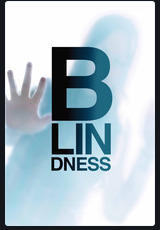
on one hand this is really clever on the other hand i am so stupid and did not understand what the hell they were spelling here
0 notes
Text
"The standard visual acuity test in the U.S. is the Snellen eye chart. It measures the clarity of your vision at a distance of 20 feet from an object. If you have 20/20 vision, which is the average score, it means you can see an object clearly from 20 feet away.
If your score is 20/70, it means that your vision at 20 feet is like normal vision at 70 feet. The World Health Organization (WHO) classifies this score as moderate visual impairment or moderate low vision. A score of 20/200 or above qualifies as severe low vision."
-- link
interesting....so that's what these mean. very interesting indeed.
2 notes
·
View notes
Text
How is squint eye diagnosed?

The diagnosis of squint eye, also known as strabismus, typically involves a comprehensive eye examination performed by an ophthalmologist or a pediatric ophthalmologist. Here is an overview of the diagnostic process for squint eye:
Medical History: The eye specialist will begin by taking a detailed medical history, including any family history of eye conditions, previous eye surgeries, or other relevant medical information.
Visual Acuity Testing: Visual acuity tests, such as the Snellen chart or age-appropriate visual acuity tests for children, are conducted to measure how well each eye can see individually. This helps determine if there are any underlying refractive errors (nearsightedness, farsightedness, or astigmatism).
Cover-Uncover Test: The cover-uncover test is a simple yet important assessment. The patient is asked to focus on an object, and one eye is covered while the other is observed. The uncovered eye's movement is noted. If one eye shifts to re-establish fixation when it is uncovered, it can indicate a misalignment or strabismus.
Alternate Cover Test: This test is similar to the cover-uncover test but involves alternating the cover between the eyes. It helps the eye specialist assess the extent and direction of the eye misalignment.
Ocular Motility Examination: The patient's ability to move their eyes in different directions is evaluated to check for any limitations or restrictions in eye movement. This assessment helps determine which eye muscles may be affected.
Refraction: Refraction testing is performed to determine the need for eyeglasses or contact lenses. Correcting refractive errors can sometimes help improve eye alignment.
Pupil Examination: The size and reaction of the pupils to light are examined to assess pupillary function and rule out certain neurological conditions.
Dilated Eye Examination: In some cases, the ophthalmologist may use eye drops to dilate the pupils, allowing for a more detailed examination of the inside of the eye, including the retina and optic nerve.
Assessment of Eye Alignment: The specialist will assess the alignment of the eyes both at near and distance fixation, looking for signs of misalignment in different gaze directions.
Specialized Testing: Additional tests, such as the use of prisms or special imaging techniques like the Hirschberg test or corneal light reflex test, may be used to quantify the degree of misalignment.
Evaluation of Binocular Vision: Binocular vision assessments determine how well the eyes work together and their ability to perceive depth and three-dimensional images. Tests like the stereoacuity test may be conducted.
Based on the results of these assessments, the eye specialist can diagnose the type and severity of squint eye and develop an appropriate treatment plan. Early diagnosis and intervention are essential, especially in children, as untreated strabismus can lead to amblyopia (lazy eye) and vision problems. Treatment options may include eyeglasses, vision therapy, patching, or surgery, depending on the individual's age, the cause of the strabismus, and the extent of eye misalignment.
Now you can reach our Dr. Sonia Maheshwari , Eye Specialist in Vidyavihar practicing at Clear Sight Eye care and Laser Center.
#dr. sonia maheshwari kothari#clear sight eyecare and Laser Center#squint eye#lazy eye#Eye Specialist in Vidyavihar
2 notes
·
View notes
Text
To use the Snellen chart, stand 20 feet away and read the rows of letters, starting at the top and working your way to the bottom. Do this while covering one eye and reading the chart with your uncovered eye. When you finish with one eye, restart the test with your other eye uncovered.
Each row of the Snellen chart represents a level of visual acuity, which is based on two numbers. The first number describes the Snellen chart’s distance from the patient. In the U.S., this number will almost always be 20 to represent 20 feet of distance. Countries that use the metric system will normally use the number 6 to represent a distance of 6 meters.
The second number describes how clearly a person can read a line of the Snellen chart from 20 feet away. For example, if someone has 20/20 vision, or “normal” vision, it means they can clearly read a line from 20 feet away that the average person could.
If someone has 20/50 vision, it means they have to be 20 feet away to read a line from the chart that someone with “normal” vision could read from 50 feet away. Source
The denominator being a larger number means worse vision. The denominator being a smaller number means better vision.
2 notes
·
View notes
Text
The fun part about this is I really could help you cheat lol (I mean you'd just be screwing yourself over cause your prescription wouldn't be right but whatever.
But when you do eye exams for long enough, its easy to accidentally memorize the Snellen chart, so you can multitask and still know what line you're reading. (We switched to digital monitors instead of the projectors so now the letters are random and I can't do this anymore which is kind of annoying but whatever). I haven't used it in like 2 years but I can still recite the whole thing lol
hey guys im going to an eye exam soon did anyone study for it? would like some help cheating if possible
15K notes
·
View notes
Text
Complete Eye Checkup in Delhi
Vision is one of the most vital senses, playing a crucial role in how we perceive the world. Unfortunately, many people tend to overlook the importance of eye health, assuming that their vision will remain the same over time. However, just like any other part of the body, our eyes can experience changes that may lead to problems if left undiagnosed or untreated.
Regular eye checkups are essential for maintaining good vision and detecting eye-related issues at an early stage. At Eyeroots Eye Clinic in Delhi, we provide comprehensive eye checkups, utilizing state-of-the-art technology and highly trained specialists to ensure the health of your eyes is in top condition.
This content will explore the need for complete eye checkups, the procedures involved, and why Eyeroots Eye Clinic is the ideal place for your eye care in Delhi.

Why Do You Need a Complete Eye Checkup?
Many people visit an eye clinic only when they notice a problem with their vision, such as difficulty seeing distant objects, reading, or persistent eye strain. However, regular comprehensive eye exams are necessary for more than just correcting vision. These checkups help in:
Early Detection of Eye Diseases: Many eye conditions, such as glaucoma, cataracts, and age-related macular degeneration, do not exhibit noticeable symptoms in their early stages. Regular checkups can detect these conditions early, allowing for timely treatment to prevent further vision loss.
Monitoring Eye Health: Regular exams help monitor any changes in your eyes over time, ensuring that any emerging problems are addressed promptly.
Correcting Vision: Routine eye exams ensure that you are wearing the correct prescription lenses. Changes in vision can occur gradually, making it difficult to notice that your glasses or contact lenses may no longer be effective.
Overall Health Indicators: The eyes can often provide insight into your overall health. Conditions such as diabetes, high blood pressure, and cholesterol can be detected through eye exams as they may cause changes in the blood vessels of the retina.
What Does a Complete Eye Checkup Include?
At Eyeroots Eye Clinic, we offer a comprehensive range of tests during a complete eye checkup to evaluate both the visual and medical health of your eyes. Here’s what you can expect during your eye exam:
1. Medical and Vision History
Before any testing begins, your doctor will ask about your medical history and any eye issues or symptoms you might be experiencing. It’s essential to inform the doctor if you have any chronic conditions, take medications, or have a family history of eye diseases. Knowing this helps in tailoring the eye examination to your specific needs.
2. Visual Acuity Test
The visual acuity test is one of the most common tests performed during an eye checkup. It measures how clearly you can see at various distances. This test typically involves reading letters on a chart placed at a standard distance. It helps determine if you need glasses or if your current prescription needs updating.
Distance Vision: Measured using the Snellen eye chart.
Near Vision: Tested using reading material or a chart positioned at a closer distance.
3. Refraction Test
If your visual acuity test shows that you need corrective lenses, a refraction test will be performed. This test determines your exact prescription for glasses or contact lenses. During the test, you’ll look through a phoropter, a machine that contains different lenses. Your doctor will ask you to choose between different lens options to determine which offers the clearest vision.
4. Eye Muscle Movement Test
This test evaluates how well your eye muscles work to control eye movement. It is essential to ensure that both eyes are working together effectively. The doctor will have you follow a moving object with your eyes to check for any weakness or misalignment in the eye muscles.
5. Pupil Response Test
Your pupils’ reactions to light can provide valuable information about the health of your optic nerves and brain function. During this test, the doctor shines a light into each eye and observes how the pupils constrict and dilate.
6. Slit Lamp Examination
A slit lamp is a specialized microscope that allows the doctor to examine the front part of your eye, including the cornea, iris, lens, and conjunctiva. This test helps detect any issues such as cataracts, corneal injuries, or dry eye syndrome.
Corneal Health: The doctor checks for any signs of corneal scratches, infections, or diseases.
Lens Clarity: To check for cataracts, the doctor will examine the lens of your eye using the slit lamp.
7. Intraocular Pressure (IOP) Test
This test measures the pressure inside your eyes (intraocular pressure) and is a crucial screening for glaucoma. The most common method is a non-contact tonometry test, where a puff of air is directed at the eye to measure IOP. Elevated IOP can damage the optic nerve and lead to glaucoma, making this test an essential part of a complete eye checkup.
8. Retinal Examination (Ophthalmoscopy)
The doctor examines the back of your eye, including the retina, optic nerve, and blood vessels. This is done using an ophthalmoscope or by dilating the pupils with special eye drops. The dilated pupils provide a clearer view of the retina and are essential for detecting conditions like diabetic retinopathy, macular degeneration, and retinal tears.
9. Peripheral Vision Test
This test evaluates your side vision, or peripheral vision. Loss of peripheral vision can be an early sign of glaucoma or other optic nerve disorders. By measuring your ability to see objects in your periphery, the doctor can assess the overall health of your vision system.
10. Color Blindness Test
A color vision test helps detect any issues with distinguishing colors. This is particularly important for individuals with color vision deficiencies, which can be hereditary or caused by certain medications or eye diseases.
Special Tests for Advanced Eye Conditions
Depending on your symptoms or the results of the standard tests, your doctor may recommend additional tests to further evaluate your eye health. Some of these include:
Optical Coherence Tomography (OCT): This imaging test provides a detailed cross-sectional view of the retina, helping detect macular degeneration, diabetic retinopathy, and other retinal conditions.
Visual Field Test: This measures your entire scope of vision, including your peripheral vision, and is often used to diagnose and monitor glaucoma.
Corneal Topography: A non-invasive test that maps the surface curvature of the cornea, used to diagnose conditions like keratoconus or to plan for laser eye surgery.
Frequency of Eye Checkups
The frequency of eye exams depends on several factors, including age, medical history, and risk for eye diseases. Eyeroots Eye Clinic recommends the following guidelines:
Children: A first eye exam should occur around 6 months of age, followed by another at 3 years old and just before starting school. Regular checkups should continue throughout their school years.
Adults (20 to 39 years): At least one eye exam every 2 to 3 years unless otherwise directed by your doctor.
Adults (40 to 64 years): Eye exams should occur every 2 years, as vision changes and age-related eye diseases can begin to develop.
Seniors (65 years and older): Annual eye exams are crucial for detecting cataracts, glaucoma, macular degeneration, and other age-related conditions.
People with certain risk factors, such as diabetes, a family history of eye disease, or those who wear contact lenses, may need more frequent checkups.
Why Choose Eyeroots Eye Clinic in Delhi for Your Eye Checkup?
Eyeroots Eye Clinic is a renowned eye care center in Delhi, offering comprehensive eye care services with an emphasis on personalized treatment. Here’s why Eyeroots stands out:
Experienced Ophthalmologists: The clinic is staffed by highly experienced and skilled eye doctors who specialize in various fields of eye care, including vision correction, eye disease treatment, and advanced surgeries.
Advanced Diagnostic Equipment: Eyeroots uses state-of-the-art technology to conduct thorough eye exams. From digital retinal imaging to advanced laser diagnostics, the clinic ensures accurate and precise results.
Patient-Centered Approach: Eyeroots is committed to providing individualized care to every patient. The clinic takes the time to understand each patient’s concerns and provides tailored solutions to meet their unique needs.
Comprehensive Services: Eyeroots offers a wide range of services, from routine eye exams to specialized treatments for eye diseases such as cataracts, glaucoma, and diabetic retinopathy.
Convenient Location: Centrally located in Delhi, the clinic is easily accessible for patients from all parts of the city and surrounding areas.
Conclusion: Protect Your Vision with Regular Checkups
Your eyes are precious, and taking care of them should be a priority. A complete eye checkup at Eyeroots Eye Clinic in Delhi can help ensure that your vision remains sharp and healthy for years to come. Whether you’re experiencing vision changes, have a family history of eye disease, or just need a routine checkup, Eyeroots offers the expertise, technology, and care necessary to keep your eyes in top condition.
Don’t wait for symptoms to arise — schedule your complete eye checkup today at Eyeroots Eye Clinic and take the first step toward preserving your eye health and vision.
0 notes
Text

Optometry Research:
The first of the women I will be interviewing on my Working Women podcast series will be an optometrist who has recent purchased her own practice and is a working mother to young children.
Below is my research on the profession and it's history as a male-dominated field.
Optometry has a rich history, dating back to the invention of the first wearable glasses in Italy during the 13th century. Key milestones in the field include Johannes Kepler's 15th-century discovery about how light enters the eye and forms on the retina, laying the foundation for understanding various visual impairments. This knowledge eventually led to the development of corrective lenses, such as concave lenses for nearsightedness and convex lenses for farsightedness. Benjamin Franklin's invention of bifocals in the 18th century further revolutionised the field by allowing individuals to see both near and far with one pair of glasses. In the 19th century, the ophthalmoscope was developed, enabling practitioners to see inside the eye, and the Snellen chart, invented in 1862, became a staple of eye exams. Glass contact lenses were first made during this period, though it wasn't until later that they became practical for everyday use. In 1910, Columbia University offered the first formal optometry courses, marking the beginning of the profession's academic and scientific evolution.
In New Zealand, optometry began to formalise in 1897 when Alfred Levi opened the first optometry practice in Wellington. The New Zealand Optical Association was established in 1912, evolving into the Institute of Optometrists by 1922, and in 1965, Auckland University began offering optometry courses. Over time, the profession became regulated, with the Optometrists and Dispensing Opticians Act of 1966 making the term "optometrist" obligatory. Despite these advancements, women faced significant challenges entering the field. Gertrude Stanton became the first licensed female optometrist in 1899, but by 1968, women made up only 2.1% of optometrists in the U.S. due to societal expectations and discriminatory hiring practices. The situation began to improve when the number of women in optometry schools increased, especially after the 1970s, and by 1992, women became the majority of enrolled students. Today, women make up 61.3% of optometrists in countries like New Zealand, reflecting a shift in gender dynamics. However, traditional gender roles and societal expectations, particularly around childcare and family responsibilities, continue to limit career advancement for women, contributing to a persistent wage gap and underrepresentation in leadership roles.
References:
https://georgiaeyephysicians.com/a-brief-history-of-optometry-ophthalmology/
https://nzao.nz/about-nzao/our-history/#:~:text=Optometry%20in%20NZ%20was%20unregulated,and%20regulated%20occupation%20by%201928.
https://journal.opted.org/article/a-look-back-celebrating-women-in-optometry/#:~:text=Around%201899%2C%20Gertrude%20Stanton%20was,the%20first%20licensed%20female%20optometrist.&text=She%20was%20soon%20followed%20by%20Millie%20Armstrong.&text=In%201912%2C%20there%20were%20500%20female%20optometrists.&text=In%201898%2C%20two%20women%20were,became%20the%20American%20Optometric%20Association.
chrome-extension://efaidnbmnnnibpcajpcglclefindmkaj/https://www.odob.health.nz/document/8129/ODOB%20Workforce%20in%20ANZ%202024%20(Final%20Online).pdf
https://www.nzoptics.co.nz/live-articles/optometry-s-salary-ceiling/
0 notes
Text
Visual acuity is the ability to see fine details clearly. It is measured using a Snellen chart and is typically expressed as a fraction, with 20/20 being normal vision.
A person with 20/20 vision can see at 20 feet what a person with normal vision can see at that distance. Anything less than 20/20 may indicate vision problems.
Visual acuity can be affected by factors such as age, genetics, and eye diseases. Regular eye exams are important to monitor changes in vision and detect potential issues early.
0 notes
Text
Does Vision Eye Care with Miyosmart Lenses Help Children?
Discover how eye test charts have evolved since the 1860s, from the classic Snellen chart to modern options like ETDRS. See how vision testing has progressed!
#Eye Test Charts#Snellen Chart#Vision Testing#History of Eye Charts#ETDRS Chart#Tumbling E#Landolt C#Visual Acuity#Eye Care History
0 notes
